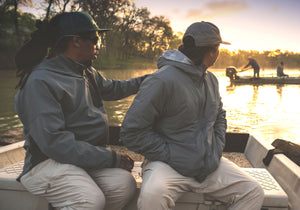Fly fishing is more than just a pastime. For many of us, it's a legacy and a tradition passed down through families and friendships. Among the many tools of the trade, few have earned the trust, affection and iconic status of the Orvis Battenkill and C.F.O. reels.
This is a tribute to two of Orvis’s most beloved reels, mechanical masterpieces that have connected generations of anglers with nature and with each other.
The Battenkill: Simplicity That Endures
Introduced in the 1960s, the Orvis Battenkill series has long been a favourite among anglers who value reliability, elegant simplicity and timeless design. Originally manufactured by Hardy’s in England, the early Battenkill reels shared DNA with Hardy’s own Lightweight series, featuring classic click-and-pawl drags and iconic machined aluminium frames.
In the decades since, the Battenkill has evolved. During the 1990s, Orvis moved production to the U.S. and introduced disc drag models, expanding its appeal to anglers chasing different species. More recently, Orvis brought back click-and-pawl models, with the same minimalist, durable and affordable features.
Today, the Battenkill remains a working classic: a reel that doesn’t need frills to earn respect. For many, it’s their first fly reel, and often, the one they return to decades later.
Speaking in the Orvis Fishing Club Facebook Group, one of our community members Bernie Weaver said:
“My parents bought this for me for my 12th birthday from Veals fishing tackle in Bristol. I'm now 51 and it has served me rather well in those years. I did send it to Orvis to be serviced some years ago, came back lovely.”

The C.F.O.
While the Battenkill is the fearless companion, the Orvis C.F.O. is its refined cousin, a reel that brings with it not just precision, but poetry.
Released in 1971, the C.F.O. was named in honour of Charles F. Orvis. With its similar ventilated spool, spring-and-pawl drag, and buttery-smooth retrieve, the C.F.O. was meant to be light, elegant, and responsive, a dream for dry-fly purists.
Over the years, C.F.O.s have been made in England and the U.S. and have been offered in limited editions and special releases. However, their essence remains the same.

Photographer - Al Simmons
A Personal Reflection: The C.F.O. and the River Węgl
To understand the emotional weight a C.F.O. can carry, consider the story of Dexter Kazmierkiewicz, who shared a beautiful reflection about a family heirloom, a 1970s-era CFO reel passed down from his grandfather:
"This reel is not just a tool for catching fish, but a symbol of the bond between my family and the river.
My grandfather, Stefan, gave me this reel in 1993, and I have been using it ever since. Stefan came into possession of the reel somewhere in the ’70s. At that time, the reel was impossible to find in Poland and was known as a legend in Polish folklore.
Somewhere in 1993, on the River Węgl, that’s where I saw Stefan for the first time casting his fly line to the shallow waters of the river. At this point, I knew exactly what my life would look like.
Stefan decided to gift me his reel as he saw my passion growing for brown trout and the cold waters of the river. That’s what I like to imagine happened.
Some time ago, the reel fell apart for the first time, and I was devastated. Fortunately, my friend Jack knew the perfect man for the job. Bob is a charming gentleman skilled in machining like no other. He took a few looks at my damaged reel and then started to work his magic. As the reel was coming together, I was pounding with excitement. Bob looked just as excited as me when I handed him the new brass handle, and the reel was revived. I shall keep using this reel until I can no longer stand.
This story is not just about a fishing reel. It is about the bond between generations and the importance of preserving the past. The reel is a symbol of the bond between my family and the river, and it is a reminder of the importance of tradition and the value of family heirlooms."
For many anglers, these reels are more than gear, they’re keepers of memories. To own one is to hold a piece of fly fishing history. To fish one is to participate in it.

